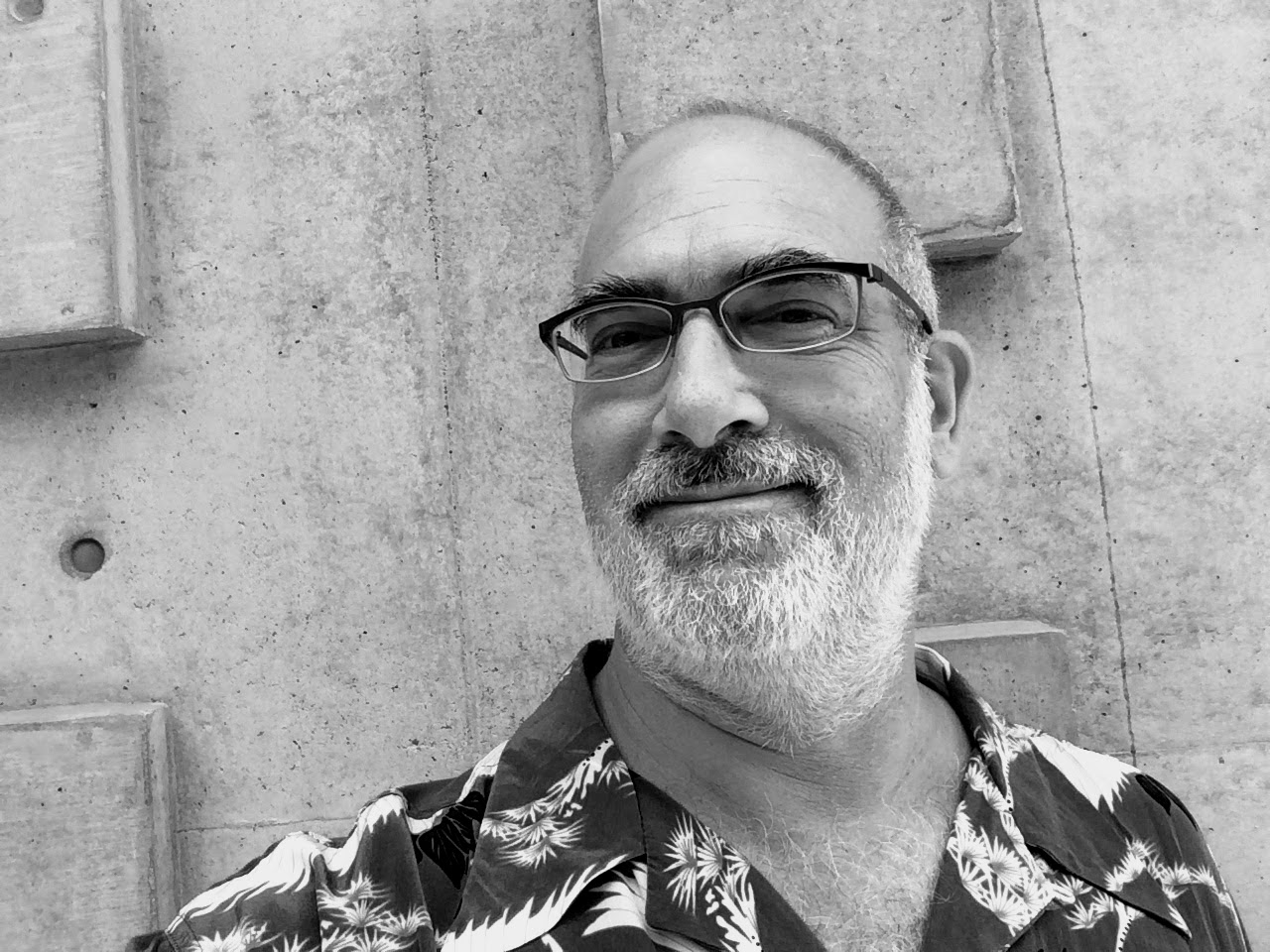When U.S. Navy Commodore Ben H. Wyatt gathered residents of Bikini Atoll at the base of a coconut palm to ask if they would temporarily relocate from their island so that the United States could test a fearsome new weapon call the atom bomb, the meeting was documented in a 1946 propaganda film called Bikini—the Atom Island. The narrator described Bikini as “a little island which has, for so long, meant so little to the world, and now means so much.”
The Bikinians agreed to the request, unaware of what was to come.

United States detonating an atomic bomb at Bikini Atoll in Micronesia in the first underwater test of the device, 1946.
Universal History Archive/GettyTesting began July 1, 1946 with a 21 kiloton bomb airdropped over Bikini, one of the Marshall Islands’ northernmost atolls. Proclaiming it was acting “for the good of mankind,” the United States then carried out 67 nuclear tests over the next 12 years with such enormous, almost unthinkable, explosive power that, averaged out, it amounted to the equivalent of 1.6 Hiroshima-sized bombs every day.
In 1958—the final year of nuclear testing in the Marshalls—the U.S. unleashed a series of blasts shocking in frequency and blast yield. Between April and August, the U.S. repeatedly detonated two nuclear bombs in a single day or conducted back-to-back tests on consecutive days, exploding 33 atomic bombs, half of the total tested at Bikini and neighboring Enewetak Atoll in less than four months.
With code names like Butternut, Aspen, Juniper, and Rose that masked their deadly ferocity, the tests led to the forced relocation of some islanders, while others were told they could stay put. Those who were relocated were moved to unfamiliar and sometimes inhospitable islands while other communities stayed, only for radioactive ash to float down on them like silent, deadly snowflakes.
The result of the testing was widespread illness, miscarriages, and entire islands left uninhabitable. Scores of communities were displaced, cut off from their ancestral homelands, and forced to start new lives on unfamiliar islands where they had no land rights. In subsequent decades, leukemia, thyroid, stomach, colon and other cancer rates reflected the impact of the tests.

Castle Bravo mushroom cloud
National Nuclear Security Administration/Public DomainFor many people in the United States today the apocalyptic power of bombs like those exploded on and above the Marshall Islands—their “fire and fury,” if you will—seems an abstraction. But the people of the Marshalls have seen it, have lived with it, and have died from the lingering effects of it.
The biggest U.S. test, codenamed Castle Bravo, was conducted on March 1, 1954 as a surface detonation that reached 15 megatons—1,000 times more powerful than the bomb that destroyed Hiroshima. Radioactive fallout drifted downwind on to unsuspecting islanders hundreds of miles away.
As a nine-year-old boy out fishing with his grandfather that morning, Tony deBrum saw the flash from the Bravo shot, and he would never forget the way the sea and sky turned a fiery red.
As an adult, deBrum served his country at the highest levels of government, as a diplomat and negotiator as the Marshall Islands gained its independence and forged a Compact of Free Association with the United States which granted each country special access to the other.

Drawing demonstrating the radioactive contamination areas of fish and water caused by the 1954 nuclear weapon test, Castle Bravo, at Bikini Atoll.
Fair Use/WikiCommonsUnder the compact, Marshallese can live, study, and work in the U.S. visa-free, but without citizenship. Meanwhile, the U.S. continues to exert great influence in the islands, offering assistance while also claiming the right of “strategic denial” to the military forces of other nations in over half a million square miles of the Pacific Ocean between Hawaii and Guam.
The U.S. also operates a multi-billion-dollar military base for missile and space operations at Kwajalein Atoll, where its lease gives it control over the world’s largest lagoon through at least 2066.
DeBrum went on to become an internationally recognized and respected leader in his country’s quest for justice—first nuclear and then climate—until his death in 2017.
He and others tirelessly pursued his nation’s ally and erstwhile bomber, demanding fairness and equity in the face of U.S. unwillingness to recognize the Marshallese call for full redress, even as the U.S. insisted it had paid “full and final compensation.”

Researchers investigate the radiation level of the fishes caught near Bikini Atoll on the deck of the research ship Shunkotsu Maru in June 1954 at Sea. All 23 crew members of the fishboat were exposed to nuclear fallout of the U.S. Castle Bravo nuclear test while fishing tuna near Bikini Atoll of the Marshall Island on March 1, 1954. Chief radio operator Aikichi Kuboyama died six months later.
The Asahi Shimbun/GettyWhen previously undisclosed details of more widespread damage from the tests emerged, deBrum took up the mantra, “There can be no closure without full disclosure.”
DeBrum’s longtime ally and close friend, an American named Bill Graham who lived in the Marshalls for nearly five decades, served as public advocate working on behalf of claimants seeking justice through the Nuclear Claims Tribunal.
Over 17 years, the tribunal awarded tens of millions of dollars in compensation generated from a $150 million trust fund established by the United States until 2005, six years before funds had been exhausted.
The tribunal called the $150 million an “arbitrary figure” rooted in politics and “manifestly inadequate to fairly compensate the inhabitants of the Marshall Islands for the damages they suffered,” with at least 2,000 people never receiving full claims. The U.S. position remains that it has paid full and final compensation.
Records from the Tribunal were archived after a decade-long effort by Graham, who died—poignantly—on the anniversary of the Bravo shot, exactly one year ago.
In a 2016 interview, Graham addressed the debt the U.S. owes its Micronesian ally, saying, “the U.S. is the world power that it is today because of its knowledge and its understanding of nuclear weapons...”
He acknowledged that the U.S. did accept some responsibility, but called the settlement inadequate and not fair.
He continued, “I think that the U.S. government needs to do more and to do right by the people of the Marshall Islands for all the knowledge and the power that they gained as a result of the weapons testing.”
The U.S. nuclear posture toward other nations, he said, was a result of the U.S. understanding better than any other government on the planet the disastrous effects of a nuclear weapon.
In 2017, the Marshall Islands’ parliament renewed efforts to seek nuclear justice when it established the National Nuclear Commission (NNC), a three-person council tasked with developing a strategy for securing nuclear justice.
NNC chair Rhea Moss-Christian told The Daily Beast in an email, “You don’t have to be from Bikini, Rongelap, Enewetak or Utrik to feel the devastation.” Moss-Christian’s own mother was a child on Ailuk Atoll, east of Bikini, where she remembered hearing the terrible roar of the Bravo shot from hundreds of miles away.

Old bunker for observation of nuclear weapons tests in the Marshall Islands
Reinhard Dirscherl / AlamyMoss-Christian called dislocation from one’s home island “the cruelest form in a culture where your identity is connected to your land, your sense of place, and roots.”
In 1968, the U.S. Atomic Energy Commission (AEC), along with the Departments of Defense and Interior and other agencies studied the possibility of repatriating some residents to Bikini, despite elevated radiation levels. The AEC determined residents could return and proposed steps be taken to reduce exposure while proposing annual monitoring for cesium-137 and strontium 90.
One of those islanders was then six-year-old Alson Kelen. In 1974, he and his parents were relocated from Kwajalein Atoll to Bikini, where they lived for four years until they were again removed when conditions were deemed unsafe.
Kelen remembers watching three ships arrive with American and Marshallese officials who spent three days trying to convince residents to leave again.
“They [knew] it was time to move because the radiation was too high for us to live there,” Kelen said, recalling how he and the others were monitored during the four years they lived on Bikini. “I still think that they knew the radiation wasn’t really settled, but they moved us there just to learn a little bit more about the radiation effect on human beings.”
Today, fewer than ten Marshallese live part-time on Bikini as caretakers. Kelen’s mother, now 95, recently asked him, “When are we going back to Bikini?”
It’s a question he doesn’t know how to answer, he says, as he recalls the promise made by the U.S. government to the people of Bikini.
“No matter where you live—on a rock or a sand bar—we will take care of you like our own children,” Kelen says, describing the American vow to return Bikini islanders home.

In this aerial image, 80-meter-deep Bravo Crater is seen on January 27, 2014 in Bikini Atoll, Marshall Islands.
The Asahi Shimbun via Getty“They left Bikini as a paradise and now it’s not a place for people to live. I think that part of the bargain will never, never be paid off. It’s sad,” he said.
Kelen, who has served as Bikini’s mayor and is now one of the NNC commissioners, has a message for world leaders who are still developing nuclear weapons.
“Look at us. We’re country-less, we’re island-less.” With new, bigger nuclear weapons, Kelen warns, “We might be Earth-less. So, learn from us.”
Another member of the Bikini community, Jack Niedenthal, is a dual U.S.-Marshallese citizen who has worked for the Bikinians for more than 30 years including as trust liaison. Today he is secretary of Health and Human Services for the Marshall Islands government.
Niedenthal says that because people in the Marshall Islands still have health issues directly and indirectly related to testing, and given their heavy sacrifice, they “deserve the best healthcare the world has to offer. Marshallese also deserve to have a large and meaningful voice in world affairs.”
Increasingly, they do.
Marshallese youth today, Kelen says, have taken up the mantle and are moving forward. The difficulties and dangers the Marshallese face in the nuclear testing era and since have made them educate themselves to navigate complex foreign political structures and take on global superpowers in their fight for justice.
“The Marshall Islands is really moving forward and is taking a strong lead,” Kelen said. “We are getting stronger and we’re learning as we go.”
In the face of a nuclear legacy that has caused so much human suffering, societal displacement, cultural disruption, and environmental destruction, what does justice even look like? Moss-Christian says, “Justice comes in many different forms for different people, but fundamentally, it is about making people feel connected again to their land.”
She continues, “It is a holistic picture of good health, the ability to prosper from your land, whether it is for subsistence or for economic gain, and to determine and contribute to shaping how culture and lifestyles evolve.”
The forced and repeated relocation of many Marshallese, and subsequent increase in outbound migration (largely to the U.S.) in pursuit of healthcare, education, and employment opportunities, Moss-Christian says, has resulted in a loss of cultural and traditional knowledge while creating a dependency on the U.S. that has not always been positive or healthy.
On March 1, a commemorative ceremony will mark Nuclear Victims Remembrance Day in the capital Majuro as well in Hawaii and Arkansas, state that are home to large Marshallese communities.
Speaking at the annual ceremony in 2017, Marshall Islands President Hilda Heine said, “Unlike the U.S., we acted in good faith. That is why ours is a moral case for which we are more than justified to seek redress commensurate with the damages inflicted on the people and their islands.”
Heine spoke those words at the height of nuclear tensions between the U.S. and North Korea, when Donald Trump and Kim Jong Un were engaged in a dangerous game of “my-nuclear-button-is-bigger-than-yours.” And while Trump and Kim are now poised to meet for a second summit in Hanoi, the U.S. government still sees North Korea as a potential nuclear threat.
Meanwhile, tensions escalate among the U.S., Russia, and China; the Intermediate-Range Nuclear Forces Treaty is all but dead, and in a new arms race, including hypersonic weapons, the U.S. is building new low-yield nuclear weapons (roughly one-third the size of the bomb that destroyed Hiroshima), while modernizing other systems.
With the potential for an actual nuclear war making headlines again, the lessons of what actual “fire and fury” bring to humanity are on full display for world leaders willing to listen and learn.
This March 1, Marshallese will remember the painful cost of nuclear weapons, even 65 years after the Bravo shot. Vaporized islands, toxic nuclear craters, exile, death, and destruction are the real-life consequences of nuclear testing that the U.S. would rather consign to the history books.
Invoking “modern-day nomads who cannot return to their homeland due to radiation,” Heine concluded by saying, “I also remind President Donald J. Trump that in order for America to be great again, it must fulfill the promises it made to the Marshallese people 71 years ago.”



